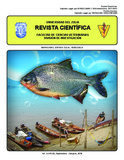| dc.rights.license | http://creativecommons.org/licenses/by-nc-sa/3.0/ve/ | es_VE |
| dc.contributor.author | Ríos Utrera, Ángel | |
| dc.contributor.author | Rosete Fernández, Jorge Víctor | |
| dc.contributor.author | Zárate Martínez, Juan Prisciliano | |
| dc.contributor.author | Fragoso-Islas, Abraham | |
| dc.contributor.author | Olazarán-Jenkins, Sara | |
| dc.contributor.author | Granados-Zurita, Lorenzo | |
| dc.contributor.author | Banda Ruiz, Víctor Manuel | |
| dc.contributor.author | Socci-Escatell, Guadalupe Asunción | |
| dc.date.accessioned | 2019-10-30T15:20:17Z | |
| dc.date.available | 2019-10-30T15:20:17Z | |
| dc.date.issued | 2019 | |
| dc.identifier.issn | 0798-2259 | |
| dc.identifier.uri | http://www.saber.ula.ve/handle/123456789/46143 | |
| dc.description.abstract | El presente estudio se llevó a cabo en 20 hatos dedicados a la producción bovina, con el objetivo de: 1- evaluar la prevalencia de anticuerpos contra rinotraqueitis infecciosa bovina (RIB) en vacas no vacunadas (N=359) de los estados de Tabasco, Puebla y Veracruz, México; 2- estudiar el efecto de dichos anticuerpos sobre la tasa de gestación; 3- estimar (revisión de literatura) la prevalencia promedio nacional. Se obtuvieron muestras de sangre dos veces en cada vaca, con un intervalo de 3,5 a 4,0 meses. La presencia de anticuerpos se determinó mediante la técnica de ELISA. En ambos muestreos, el estado de Puebla (34,0 y 41,2%) presentó menor prevalencia (P<0,01) que los estados de Tabasco (83,1 y 91,1%) y Veracruz (79,9 y 74,4%). Al primer muestreo, la prevalencia varió de 14,3 a 90,7% entre Municipios, mientras que al segundo varió de 25,0 a 91,7%. Al primer muestreo, la prevalencia varió de 14,3 a 96,0% entre hatos, mientras que al segundo varió de 15,0 a 94,7%. La tasa de gestación de las vacas sin anticuerpos contra RIB fue similar (P>0,05) a la de las vacas con anticuerpos (54,3 vs 55,7%). En conclusión, 1) los estados de Tabasco y Veracruz presentaron mayor prevalencia que el estado de Puebla; 2) el 100% de los hatos presentaron anticuerpos contra RIB, lo que sugiere que el virus de la RIB está ampliamente distribuido en los tres Estados; 3) existió una gran variación en la prevalencia entre hatos y entre Municipios, siendo ésta cercana a 100% en varios casos; 4) la presencia de anticuerpos contra RIB no influyó la tasa de gestación; y 5) la prevalencia promedio nacional fue 56,4%. Se recomienda que las agencias de gobierno estatales responsables de la salud animal implementen estrategias de prevención y control contra la RIB. | es_VE |
| dc.language.iso | es | es_VE |
| dc.publisher | SaberULA | es_VE |
| dc.rights | info:eu-repo/semantics/openAccess | es_VE |
| dc.subject | Rinotraqueítis infecciosa bovina | es_VE |
| dc.subject | Prevalencia | es_VE |
| dc.subject | Anticuerpos | es_VE |
| dc.subject | Fertilidad | es_VE |
| dc.subject | Vacas | es_VE |
| dc.subject | Trópico | es_VE |
| dc.title | Rinotraqueítis infecciosa bovina: determinación de la prevalencia de anticuerpos en vacas mexicanas no vacunadas de los estados de Tabasco, Puebla y Veracruz | es_VE |
| dc.title.alternative | Infectious Bovine Rhinotracheitis: Determination of the Prevalence of Antibodies in Mexican Non- Vaccinated Cows in the States of Tabasco, Puebla and Veracruz | es_VE |
| dc.type | info:eu-repo/semantics/article | es_VE |
| dcterms.dateAccepted | 20/02/2018 | |
| dcterms.dateSubmitted | 23/10/2018 | |
| dc.description.abstract1 | The present study was carried out in 20 herds dedicated to cattle production with the objective of: 1- to evaluate the prevalence of antibodies against infectious bovine rhinotracheitis (IBR) in non-
vaccinated cows (N=359) from the States of Tabasco, Puebla and Veracruz, Mexico; 2- to study the effect of such antibodies on pregnancy rate; 3- to estimate (literature review) the national mean prevalence. Two blood samples were taken from each cow, with an interval from 3.5 to 4.0 months. The presence of antibodies was determined by the ELISA test. At both samplings, the State of Puebla (34.0 and 41.2%) showed lower prevalence (P<0.01) than the States of Tabasco (83.1 and 91.1%) and Veracruz (79.9 and 74.4%). At the first sampling, the prevalence varied from 14.3 to 90.7% among Municipalities, while at the second sampling it varied from 25.0 to 91.7%. At the first sampling, the prevalence varied from 14.3 to 96.0% among herds, while at the second sampling it varied from 15.0 to 94.7%. The pregnancy rate of cows without antibodies against IBR was similar (P>0.05) to that of cows with antibodies (54.3 vs 55.7%). In conclusion, 1) the States of Tabasco and Veracruz showed higher prevalence than the State of Puebla; 2) 100% of the herds had antibodies against IBR, suggesting that the IBR virus is widely distributed in the three States; 3) a great variation existed among herds and among Municipalities, with prevalence being close to 100% in several cases; 4) the presence of antibodies against IBR did not influence pregnancy rate; and 5) the national mean prevalence was 56.4%. It is recommended that the State Government Agencies responsible of the animal’s health, implement strategies of prevention and control against IBR. | es_VE |
| dc.description.colacion | 349-359 | es_VE |
| dc.description.email | rios.angel@inifap.gob.mx | es_VE |
| dc.identifier.depositolegal | pp199102ZU46 | |
| dc.identifier.edepositolegal | ppi201502ZU4665 | |
| dc.identifier.eissn | 2477-944X | |
| dc.publisher.pais | Venezuela | es_VE |
| dc.subject.institucion | Universidad del Zulia (LUZ) | es_VE |
| dc.subject.institucion | Universidad de Los Andes (ULA) | es_VE |
| dc.subject.keywords | Infectious bovine rhinotracheitis | es_VE |
| dc.subject.keywords | Prevalence | es_VE |
| dc.subject.keywords | Antibodies | es_VE |
| dc.subject.keywords | Fertility | es_VE |
| dc.subject.keywords | Cows | es_VE |
| dc.subject.keywords | Tropics | es_VE |
| dc.subject.publicacionelectronica | Revista Científica | |
| dc.subject.thematiccategory | Medio Ambiente | es_VE |
| dc.subject.tipo | Revistas | es_VE |
| dc.type.media | Texto | es_VE |


